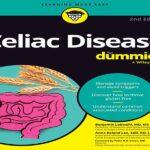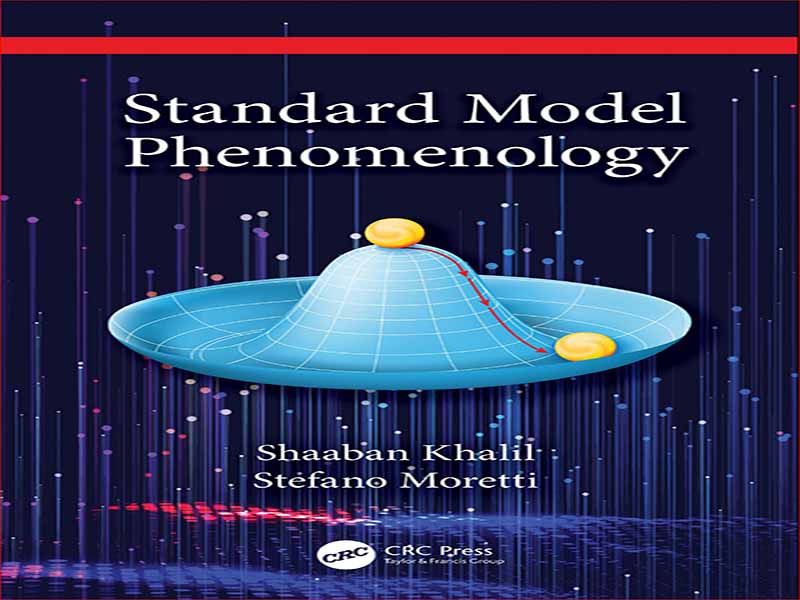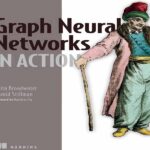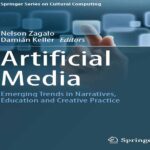- عنوان کتاب: Standard Model Phenomenology
- نویسنده: Shaaban Khalil
- سال انتشار: 2022
- حوزه: مدل های ریاضی
- تعداد صفحه: 247
- زبان اصلی: انگلیسی
- نوع فایل: pdf
- حجم فایل: 27.5 مگابایت
ما در مقدمه خود به طور مفصل به مفهوم پدیده پرداخته ایم. با این حال، پدیده هایی که ما در علم می سازیم چه فایده ای دارند؟ ما آنها را “کاهش” می دهیم. تقلیل گرایی عبارت است از تجزیه و تحلیل و توصیف یک پدیده پیچیده بر حسب اجزای ساده یا اساسی آن، به ویژه هنگامی که به نظر می رسد که این توضیح کافی ارائه دهد. SM مرز فعلی رویکرد تقلیل گرایانه در فیزیک ذرات به منظور درک ماده و نیروها است. این کتاب به درک این موضوع اختصاص دارد که اساسیترین اجزای سازنده ماده چیست و چگونه با یکدیگر تعامل دارند. اما این فقط یک نقطه شروع است. هدف نهایی چنین تلاشی در واقع یک ToE است که به صورت ریاضی این دو عنصر (ماده و نیرو) را تحت هر شرایطی توصیف می کند. ما ممکن است در زمینه های زیبایی شناختی به نوعی اتحاد فیزیک ذرات امیدوار باشیم که نظریه ای را تنها با یک گونه ذره و یک گونه تعامل باقی بگذارد. چنین ایده ای به شدت با پیشرفت فیزیک ذرات تا به امروز نشان داده شده است، که در آن مجموعه گسترده ای از پدیده ها در قوانین نسبتا کمی تقطیر شده اند، به عنوان مثال، همه پدیده های الکتریسیته و مغناطیس اکنون در یک نظریه واحد قرار دارند. با این حال، اگر طبیعت نمیخواهد همکاری کند، البته نمیتوانیم این را از طبیعت بخواهیم. میتوان سناریوی «عروسک روسی» را تصور کرد که در آن ماده همچنان دارای اجزای کوچکتر و کوچکتر است، همانطور که ما در مقیاسهای کوچکتر و بینهایت نگاه میکنیم. از نظر فلسفی، حتی در مورد یک ToE نهایی، ممکن است نگران باشیم که چرا ماده و نیروهای بنیادی خاص موجود در آن و قوانین حاکم بر آنها همان چیزی هستند که طبیعت انتخاب میکند. اما پاسخ به چنین سؤالی حتی در اصل فراتر از توان علم است. در واقع، به نظر می رسد که پاسخ به این سؤال متعلق به دنیای اسمی باشد. بنابراین، ما در اینجا با آن زحمت نمی دهیم. در واقع، هدف دستیابی به یک توصیف ریاضی کامل از طبیعت، به خودی خود تجربه هیجان انگیزی است که به عنوان دانشمندان، ما بیش از حد از درک این موضوع غافل شدهایم که چگونه این همه نگران این هستیم که از خود بپرسیم چرا چنین شد. در واقع، در نهایت باید توجه داشته باشیم که یک رویکرد تقلیل گرایانه که می تواند در نهایت حتی یک ToE را به ساده ترین شکل ممکن فرموله کند، به این معنا نیست که ما همه چیز دنیای اطراف خود را درک خواهیم کرد. در واقع، برای شروع، ما نمی توانیم بفهمیم که چرا می توانیم آن را توضیح دهیم. جهش بین ذرات بنیادی و فعل و انفعالات و نحوه ترکیب آنها برای تولید زندگی، آگاهی و در نهایت درک ما از رفتار آنها، مهم نیست که چقدر هیجان انگیز باشد، بسیار دور از محدوده فیزیک ذرات است. دومی فقط به اولی می پردازد و ما اینجا هم همین کار را می کنیم. این کتاب عمدتاً بر اساس آموزش شخصی و فعالیت های تحقیقاتی ما با همکاران مختلف است که ما در اینجا به طور جمعی از آنها تشکر می کنیم. ما در واقع نمی توانیم آنها را یکی یکی بپذیریم، زیرا فهرست بسیار طولانی خواهد بود. با این حال، ما در اینجا می خواهیم کسانی را که به دلایلی می توانند بیشتر با این کتاب مرتبط باشند، مشخص کنیم. بنابراین به طور خاص به ترتیب حروف الفبا از A. Ballestrero، J.R. Ellis، N.J. Evans، E. Maina، R.G. رابرتز، ام.اچ. سیمور، سی.اچ. Shepherd-Themistocleous، P.Z. اسکندز، W.J. Stirling و B.R. وبر. در پایان، علاوه بر مؤسسات خودمان، مایلیم از سرن نیز تشکر کنیم که در آن بخشهای زیادی از این کتاب کار شده است. ما همچنین از S. Bradshaw برای کمک در مورد مسائل مربوط به حق چاپ سپاسگزاریم.
We have dwelt upon the concept of phenomenon at length in our preamble. However, what is the use of phenomena that we make in Science? We ‘reduce’ them. Reductionism is the practice of analysing and describing a complex phenomenon in terms of its simple or fundamental constituents, especially when this is deemed to provide a sufficient explanation. The SM is the current frontier of the reductionist approach in particle physics in order to understand matter and forces. This book is dedicated to understanding what the most basic building blocks of matter are and how they interact with each other. But this is just a starting point. The ultimate goal of such an endeavour is in fact a ToE which mathemat- ically describes these two elements (matter and forces) under all conditions. We might hope on aesthetic grounds for some kind of unification of particle physics leaving a theory with just one species of particle and one species of in- teraction. Such an idea is strongly hinted at by the progress of particle physics to date, wherein a vast array of phenomena has been distilled into a relatively few laws, e.g., all of the phenomena of electricity and magnetism now reside in a single theory. However, we cannot, of course, demand this of Nature if She does not want to cooperate. One could imagine a “Russian doll” scenario where matter continues to be found to have smaller and smaller constituents as we look on smaller and smaller scales ad infinitum. Philosophically we may worry, even in the case of a final ToE, why the particular fundamental matter and forces existing within it and the laws governing them are the ones Nature chooses. The answer to such a question, however, seems beyond the power of Science, even in principle. Indeed, the answer to this question appears to belong to the noumenal world. So, we do not bother with it here. In fact, the goal of achieving a complete mathematical description of Nature is per se such a thrilling experience that, as scientists, we are far too taken by understanding how it all came about to worry about asking ourselves why it did. Indeed, we should finally note that a reductionist approach able to ulti- mately formulate even a ToE in the simplest possible form does not imply that we will understand everything of the world surrounding us. In fact, for a start, we will not be able to understand why we can explain it. The leap between fundamental particles and interactions and how they combine into producing life, consciousness and ultimately our understanding of their behaviour, no matter how exciting this might be, is far too remote from the scope of particle physics. The latter only deals with the former and so we do here. This book is based largely on our personal training and research activities with various collaborators, whom we thank here collectively. We cannot in fact acknowledge them one by one, as the list would be far too long. However, we would like to single out here those who can be more closely associated with this book, for one reason or another. We thus thank in particular, in alphabetical order, A. Ballestrero, J.R. Ellis, N.J. Evans, E. Maina, R.G. Roberts, M.H. Seymour, C.H. Shepherd-Themistocleous, P.Z. Skands, W.J. Stirling and B.R. Webber. Finally, in addition to our own institutions, we would like to also thank CERN, where many parts of this book were worked upon. We are also grateful to S. Bradshaw for help with copyright issues.
این کتاب را میتوانید از لینک زیر بصورت رایگان دانلود کنید:
Download: Standard Model Phenomenology



































نظرات کاربران